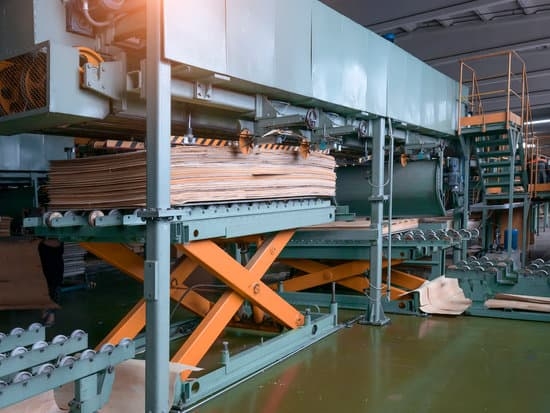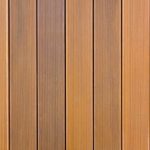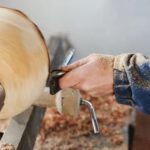Are you interested in learning how to make a table with no skirt woodworking? This popular design choice in woodworking involves creating a table without the traditional structural support of a skirt underneath the tabletop. This design is not only aesthetically pleasing but also allows for more legroom and a lighter appearance in the overall look of the table.
Tables with no skirts are becoming increasingly popular due to their modern and minimalist appeal. By eliminating the traditional skirt, these tables often showcase clean lines and an open feel that can complement various interior styles. Additionally, the absence of a skirt provides an opportunity for woodworkers to showcase their craftsmanship and creativity in designing unique pieces.
In this article, we will guide you through the process of creating your own table with no skirt in woodworking. From choosing the right materials and tools to cutting, shaping, and joining techniques, we will provide step-by-step instructions to help you bring your vision to life. So grab your woodworking gear and get ready to embark on this exciting project.
Materials Needed
When it comes to creating a table with no skirt in woodworking, the materials you use play a crucial role in determining the overall quality and aesthetics of the final product. To embark on this project, you will need a variety of materials to bring your vision to life. Here is a detailed list of all the essential items required for making a table without a skirt:
Wood
The primary material needed for constructing a table without a skirt is the wood itself. It’s important to choose high-quality wood that complements your design preferences and meets your durability requirements. Popular options include oak, maple, walnut, and cherry. Ensure that the wood is properly dried and free of defects to avoid issues during construction.
Tabletop Fasteners
Since there will be no skirt to provide additional support for the table legs, tabletop fasteners are essential for reinforcing the connection between the tabletop and legs. These fasteners help secure the tabletop in place and prevent any wobbling or instability over time.
Wood Glue
Wood glue is another crucial material for assembling a table without a skirt. It helps bond various components together securely, ensuring that your table remains sturdy and durable for years to come. Look for high-quality wood glue that dries clear and provides a strong adhesive bond.
By gathering these materials beforehand, you can streamline the woodworking process and focus on bringing your unique table design to fruition with no skirt, resulting in a beautiful piece of furniture that stands out in any room setting.
Tools Required
When embarking on the project of making a table with no skirt in woodworking, having the right tools is essential to ensure a successful and efficient work process. Here is a comprehensive list of woodworking tools and equipment that you will need for this project:
Power Tools
To begin with, you will need power tools such as a table saw, circular saw, or jigsaw for cutting the wood to size. A router for creating smooth edges and intricate designs, as well as a cordless drill with various drill bits for joinery, are also recommended. Additionally, a belt sander or orbital sander will come in handy for sanding down surfaces before finishing.
Hand Tools
In addition to power tools, having essential hand tools like a chisel set for precise carving and shaping, a combination square for accurate measurements, and clamps to hold pieces together during assembly is crucial. A tape measure, hammer, mallet, and screwdrivers are also necessary for various tasks throughout the project.
Safety Gear
Safety should always be a top priority when working with woodworking tools. Make sure to have safety gear such as safety goggles to protect your eyes from flying debris, ear protection if using loud power tools, and dust masks to prevent inhaling wood particles. Gloves can also provide added protection while handling sharp tools or rough wood surfaces.
By ensuring you have all the necessary woodworking tools and equipment listed above before starting your project to make a table with no skirt woodworking design, you’ll be well-prepared to tackle each step of the process with confidence and precision.
Choosing the Wood
When it comes to making a table with no skirt in woodworking, choosing the right type of wood is essential to the success and longevity of the project. The wood you select will not only impact the overall look and feel of the table but also its durability and how it holds up over time.
There are various factors to consider when selecting the wood for your table, such as the aesthetics you desire, the budget you have available, and how much wear and tear the table will endure.
One important consideration when choosing wood for a table with no skirt is durability. Since there won’t be additional support from a skirt, it’s crucial to select a sturdy and long-lasting wood species that can withstand daily use.
Hardwood options like oak, maple, cherry, or walnut are popular choices for their strength and resilience. Alternatively, if you’re looking for a more budget-friendly option, pine or poplar can also be suitable choices with proper sealing and finishing.
In addition to durability, aesthetics play a significant role in choosing the right wood for your table. The type of wood you select will greatly influence the overall look of the table, so consider factors such as grain pattern, color variations, and natural imperfections. For a rustic or farmhouse style table, reclaimed wood with visible knots and imperfections can add character and charm.
On the other hand, if you prefer a more sleek and modern look, opt for woods like maple or cherry with smooth grains and consistent coloration. Ultimately, choose a wood species that aligns with your design preferences and complements your existing decor.
Cutting and Shaping
When it comes to creating a table without a skirt in woodworking, the process of cutting and shaping the wood is crucial to achieving the desired outcome. Here are some step-by-step instructions on how to cut and shape the wood effectively for this project:
- Measure Twice, Cut Once: Before making any cuts, ensure that you have precise measurements of the wood pieces required for your table. Double-check these measurements to avoid any errors.
- Use Proper Sawing Techniques: Depending on the type of cut needed, use a circular saw, jigsaw, or table saw to achieve clean and accurate cuts. Take your time and follow safety precautions while operating these tools.
- Create Smooth Edges: After cutting the wood pieces, use a router or sander to smooth out any rough edges. This will not only improve the appearance of your table but also prevent splinters.
Shaping the wood for a table with no skirt involves creating clean lines and angles that enhance the overall design. Here’s how you can shape the wood effectively:
- Mark Your Angles: If your table design includes slanted legs or unique angles, use a protractor or angle finder to mark these angles accurately on the wood.
- Cut Carefully: When shaping angled pieces of wood, pay close attention to your cutting technique to ensure that each piece fits together seamlessly when assembling the table.
- Sand Smoothing Surfaces: Once all pieces are cut and shaped accordingly, use sandpaper or a sander to smooth out any imperfections on the surfaces. This step is essential for achieving a professional finish.
By following these step-by-step instructions for cutting and shaping the wood for a table without a skirt in woodworking, you can create a stylish and modern piece of furniture that will stand out in any room. Remember to take your time during this process and pay attention to detail for best results.
Joinery Techniques
Creating a table with no skirt in woodworking involves utilizing different joinery techniques to assemble the pieces securely. By properly executing these techniques, you can ensure that your table is not only aesthetically pleasing but also durable and long-lasting. Here are some common joinery techniques that you can use for assembling a table without a skirt:
- Dowels: Using dowels involves drilling holes into the joining pieces of wood and inserting cylindrical rods to create a strong bond. This technique is simple yet effective in providing stability to the table structure.
- Mortise and Tenon: Mortise and tenon joints involve cutting a slot (mortise) on one piece of wood and shaping a protruding piece (tenon) on the other piece to fit into the slot. This traditional method is known for its strength and durability.
- Pocket Holes: Pocket hole joinery entails creating angled holes in one piece of wood using a pocket hole jig, allowing screws to be inserted into the adjoining piece. This technique is quick and efficient for connecting tabletops or legs.
Each of these joinery techniques has its own advantages, so it’s important to choose the one that best suits your woodworking skills and the design of your table. Experimenting with different methods can also help you enhance your woodworking abilities and create unique furniture pieces.
When incorporating these joinery techniques into your project, precision and attention to detail are key factors for success. Make sure to accurately measure and carefully execute each step to ensure that the pieces align correctly and form a sturdy table structure. With practice and patience, you’ll be able to master these joinery techniques and confidently construct a beautiful table with no skirt that showcases your woodworking craftsmanship.
Finishing Touches
When it comes to creating a table with no skirt in woodworking, paying attention to the finishing touches is crucial to achieving a professional and polished look. One of the first steps in this process is sanding the table surface. Start with a coarse grit sandpaper to remove any rough spots or imperfections. Gradually move to finer grits until you achieve a smooth and even surface. Be sure to sand along the grain of the wood for the best results.
After sanding, it’s time to choose a stain that will enhance the natural beauty of the wood while providing protection. Consider factors such as the type of wood you’re working with and the desired color tone.
Apply the stain evenly using a brush or rag, following the manufacturer’s instructions for drying times and additional coats if needed. Once your stain has fully dried, finish off your table by applying a clear coat of polyurethane or lacquer for added durability and shine.
In addition to sanding and staining, other finishing touches can elevate your table-making project even further. Consider adding decorative details like inlay work or carving for a personalized touch.
You can also experiment with different finishing techniques such as distressing for a rustic look or high-gloss finishes for a modern aesthetic. No matter which options you choose, taking the time to focus on these finishing touches will ensure that your table with no skirt stands out as a beautiful piece of craftsmanship.
| Step | Description |
|---|---|
| Sanding | Use coarse grit sandpaper followed by finer grits; sand along the grain |
| Staining | Choose appropriate stain, apply evenly, consider wood type and desired color tone |
| Finishing Coat | Apply clear coat of polyurethane or lacquer for protection and shine |
Maintenance Tips
When it comes to maintaining a table with no skirt in woodworking, proper care and attention are essential to ensure its longevity and beauty. One of the most important maintenance tips is to regularly clean the table surface to prevent dust, dirt, and debris from accumulating. Use a soft cloth or a microfiber towel to gently wipe down the table, avoiding any harsh chemicals that could damage the wood.
Another important aspect of caring for a table with no skirt is protecting it from moisture and heat. Avoid placing hot items directly on the surface of the table, as this can cause discoloration or even lead to warping of the wood. Additionally, use coasters or placemats to protect the table from water rings and spills. Consider applying a protective sealant or finish to the table surface periodically to enhance its resistance to moisture and heat.
Lastly, it is recommended to periodically inspect the table for any signs of wear or damage. Check for loose joints, cracks, or scratches that may need repair. Address any issues promptly to prevent them from worsening over time. By following these maintenance tips consistently, you can ensure that your table with no skirt not only retains its beauty but also lasts for many years to come.
Conclusion
In conclusion, making a table with no skirt in woodworking can be a rewarding and fulfilling project for any DIY enthusiast or woodworker. By following the detailed instructions provided in this guide, you can create a unique piece of furniture that not only showcases your woodworking skills but also adds a touch of modernity and elegance to your space.
The clean lines and open design of a table without a skirt can make a room feel more spacious and airy, making it a popular choice for contemporary interior designs.
One of the key benefits of constructing a table with no skirt is the freedom it provides in terms of personalization and customization. From choosing the type of wood to selecting the joinery techniques and finishing touches, you have complete control over every aspect of the project. This allows you to create a table that fits your specific style preferences and complements your existing decor seamlessly.
Lastly, taking on the challenge of building a table with no skirt is not only a great way to hone your woodworking skills but also a cost-effective way to add high-quality furniture to your home. With proper care and maintenance, your handcrafted table can last for years to come, becoming a cherished piece that holds sentimental value.
So why not roll up your sleeves, gather the materials and tools needed, and embark on this exciting woodworking journey to create a stunning table with no skirt that will surely be the centerpiece of any room?
Frequently Asked Questions
How Do You Make a Table Without an Apron?
Making a table without an apron involves constructing the table’s top surface and legs without the connecting horizontal support piece underneath. This design can result in a more open and airy look for the table, but it may compromise stability depending on the materials used and construction method.
Does a Table Need a Skirt?
A skirt is not necessary for a table, as it mainly serves an aesthetic purpose by covering the legs or apron of the table. Some tables have a skirt to hide hardware or provide a cohesive look, but many modern designs forego this feature for a cleaner, more minimalist appearance.
Is an Apron Necessary on a Table?
An apron is not strictly necessary on a table, but it does serve important functional purposes. The apron provides structural support to the tabletop, preventing warping or flexing over time.
Additionally, an apron can protect the edges of the tabletop from damage and lend stability to the overall structure of the table. However, in certain designs or materials, such as glass tabletops or modern metal frames, an apron may be omitted without compromising functionality.

Hi everyone! I’m a woodworker and blogger, and this is my woodworking blog. In my blog, I share tips and tricks for woodworkers of all skill levels, as well as project ideas that you can try yourself.





